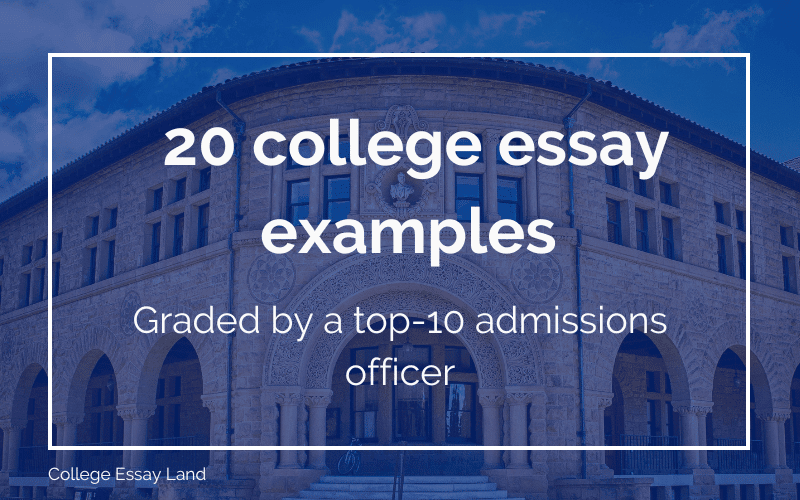Contents
Last updated March 21, 2024
Every piece we write is researched and vetted by a former admissions officer. Read about our mission to pull back the admissions curtain.
How to Use the Stanford Common Data Set
Admissions officer reviewed by
Ben Bousquet, M.Ed
Former Vanderbilt University
Written by
Kylie Kistner, MA
Former Willamette University Admissions
Key Takeaway
Stanford has one of the lowest acceptance rates around. To earn admission, you need more than good grades and impressive extracurriculars. You need a compelling application narrative that shows your intellectual vitality and personal characteristics.
With Stanford’s 3.9% acceptance rate, you need all the help you can get. The Stanford Common Data Set may be just the leg up your application needs.
In this post, I’ll walk you through the most important parts of the Stanford Common Data Set. And I’ll show you how to put the data to work in your favor.
Let’s get to it.
How Stanford Evaluates Applicants — based on CDS data
When Stanford admissions officers evaluate your application, they’re looking for you to stand out among the other tens of thousands of applicants. To get into Stanford, you can expect to need a near-perfect to perfect GPA, excellent course rigor, well-recognized extracurriculars, and, in some cases, near-perfect test scores.
So what other factors can help set you apart? That’s where your essays, recommendations, and extracurricular section come in. Because talent and personal character are also listed as very important evaluative criteria, you can tell that each part of your application should speak to either your talent or your character. We like to refer to these traits as application “strengths,” and we have a whole course about how to convey them in your essays. Across the board, your application should tell a story about why your strengths should compel Stanford admissions officers to admit you.
| Very important | Important | Considered | Not considered |
|---|---|---|---|
| Rigor | Interview | State residency | |
| Class rank | First generation | Religious affiliation | |
| GPA | Alumni/ae relation | Applicant interest | |
| Test scores | Geographical residence | ||
| Essay | Racial/ethnic status | ||
| Recommendations | Volunteer work | ||
| Extracurriculars | Work experience | ||
| Talent/ability | |||
| Character/personal qualities |
Does Stanford track demonstrated interest?
No, Stanford doesn’t track demonstrated interest. Some schools care a lot about whether applicants are excited about the institution—so much so that they formally track it in their applicant system. But nope, no Stanford. Applicant interest is one of the evaluative factors that isn’t considered at all in the Stanford admissions process, so don’t worry about opening every single Stanford email you get. Spend your time on your essays instead.
Does Stanford care about standardized test scores?
Yep. Stanford cares about test scores—a lot. In fact, test scores rank as highly as GPA, extracurriculars, and personal character. They all fall under the “very important” category in Stanford application reviews. In a test-optional landscape, knowing whether to submit your scores can be tricky. The Stanford Common Data Set reports that 48% of enrolled first-year students sent in an SAT score, and 31% submitted an ACT score, so lots of students are still submitting their scores. If you’re on the fence about your scores, we have more advice in our test-optional strategy post.
Does Stanford care about essays?
Absolutely. Essays are actually one of the most important pieces of your Stanford application. Admissions officers use them to learn more about you—they’re how you distinguish yourself from all the other amazing applicants. While essays rank as highly as GPA in importance for the Stanford admissions process, essays are also the application components over which you have the most control. When you reach your senior year, you can’t do much about your GPA or course rigor. But you can write application essays that stand out. And the Stanford essays are a doozy. That’s why we have a whole post about how to write the Stanford supplemental essays.
What GPA do I need to get into Stanford?
Here’s a striking statistic for you: 100% of Stanford’s first-year enrolled students were in the top quarter of their high school graduating classes. A full 96% were in the top tenth. Yikes!
If you look at the GPA data in the chart below, you can see that those class rank statistics don’t necessarily mean that everyone who enrolled at Stanford had a perfect 4.0 GPA. Well, 75% of them did. But there is some distribution across the GPA bands. You may have a chance if your GPA isn’t close to perfect, but your likelihood of being admitted will be much better as you get closer to a 4.0.
| GPA | % of Enrolled Students |
|---|---|
| 4.0 | 75.1 |
| 3.75-3.99 | 19 |
| 3.50-3.74 | 2.5 |
| 3.25-3.49 | 1.6 |
| 3.00-3.24 | 1.4 |
| 2.50-2.99 | 0.03 |
Stanford Acceptance Rate
Stanford received 55,471 applications—one of the largest applicant pools among Stanford’s peers. Only 2,190 students were admitted… That means Stanford’s acceptance rate is a cry-inducing 3.95%. That’s almost a full percent less than MIT’s terrifying rate of 4.7%.
Stanford Restrictive Early Action Acceptance Rate
Stanford does not have an Early Decision application plan, but they do have a Restrictive Early Action option, which also prohibits you from applying Early Decision from any other colleges or universities (among a few other caveats). Unfortunately, the Stanford Common Data Set does not report any application or acceptance data for REA applicants, so we can’t know for sure if an REA application gives you any kind of boost. But in general, students who apply REA tend to be top-notch applicants, so REA admit rates do tend to be a little higher.
What’s the right application option for you?
There’s no right answer when it comes to school list building and application options, but there are often wrong answers. If you have a 3.0, have only taken 1 AP class, and don’t have many extracurriculars on your resume, then an REA to Stanford probably isn’t working in your best interest. You’re probably better off EDing elsewhere.
Choosing where to apply Early Decision or Restrictive Early Action is a strategic choice that factors in your application strengths and personal preferences. For more about how to choose your ED school, read our Early Decision strategic guide.
Most popular majors at Stanford
The Stanford Common Data Set doesn’t address majors directly. But we can tell what students are majoring in by looking at the kinds of degrees Standford awards to graduating students.
From the data, you can see that the three most popular disciplines at Stanford are computer and information sciences, engineering, and interdisciplinary studies. Those fields alone accounted for almost half—48.6%, to be exact—of degrees awarded. Given Stanford’s history and reputation, those statistics are no shock. With nearly half of degrees going to students in those fields, you can expect an added level of difficulty earning admission if you’re applying to them, too.
| Major | Percent of Degrees Conferred |
|---|---|
| Computer and information sciences | 17.2 |
| Engineering | 15.9 |
| Interdisciplinary studies | 15.5 |
| Social sciences | 14.3 |
| Mathematics and statistics | 5.8 |
| Physical sciences | 4.8 |
| Engineering technologies | 4.4 |
| Biological/life sciences | 4 |
| Psychology | 3.2 |
| Area, ethnic, and gender studies | 2.9 |
But if you’re interested in area, ethnic, and gender studies, for example, you may have a marginally easier chance of getting in because the applicant pool is less competitive. Same with psychology or biological and life sciences.
Applying to a less popular major definitely isn’t a method to “hack” your way into Stanford, but if you’re already interested in those subjects to begin with, then you may give Stanford another look—especially if your application strengths align with the evaluative criteria laid out in the Stanford Common Data Set.
What should you do with all this information?
Stanford is one of the most prestigious institutions in the world. It’s also one of the most difficult to earn admission to. If you want to be one of the 3.95%, you’ll need to craft an application that rises above the other 96.05% of applicants.
As with applying to any highly selective school, you’re going to need a stellar GPA and course rigor. You’re also going to need extracurriculars that demonstrate both reach—regional, state, national, or international—and impact. And choosing your application plan and major pathway wisely can be the cherry on top of a strategic application.
When it comes to evaluating applications, Stanford admissions officers leave nothing on the table. Everything is important, so make every single application component count.
We show you how to do just that in our How to Get into Stanford guide. See you there. 👋



